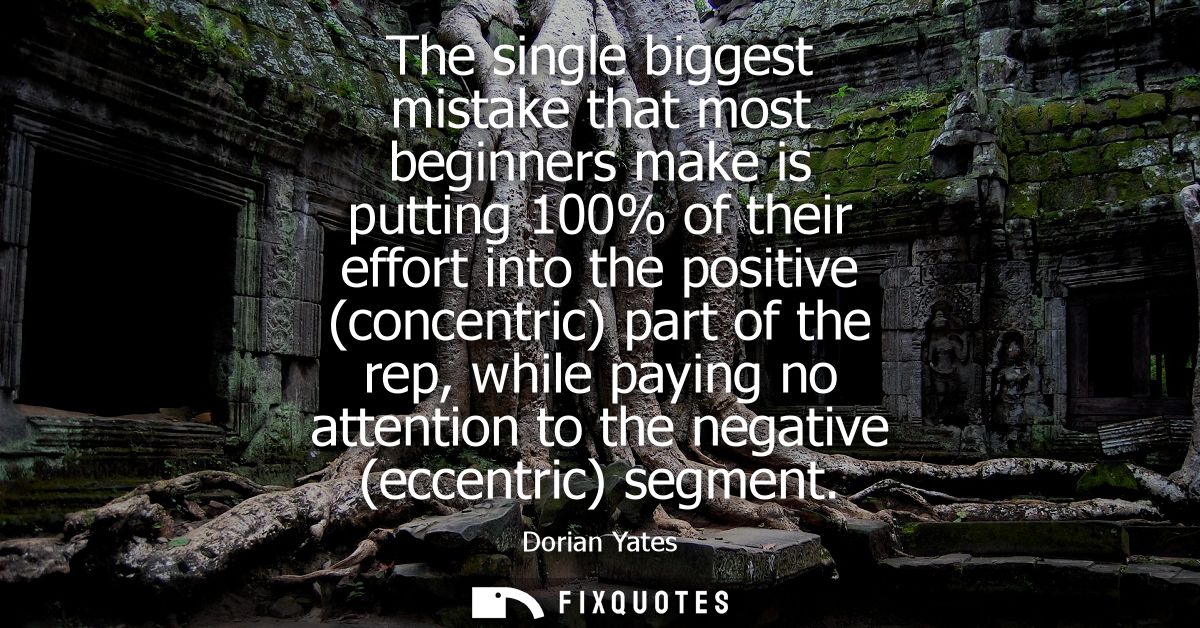"The single biggest mistake that most beginners make is putting 100% of their effort into the positive (concentric) part of the rep, while paying no attention to the negative (eccentric) segment"
About this Quote
Beginners often chase the “up” portion of a lift because it feels like the work. The message is a correction: the lowering phase isn’t filler; it is the rep’s most potent teacher. Muscles can handle greater force while lengthening than while shortening, and that high mechanical tension during the eccentric is a primary driver for strength and hypertrophy. Ignoring it wastes stimulus and pushes stress to joints and connective tissue through sloppy rebounds and momentum.
Controlling the negative builds coordination and joint integrity. It teaches you to keep the load over the right levers, to own the range of motion, and to place stress where you intend, on muscle, not ligaments. It’s also metabolically efficient; you can produce high forces at a lower energy cost, which makes eccentric control a smart place to “spend” effort.
Practical cues make this simple. Lower with intent for 2–4 seconds, maintain constant tension, and avoid bouncing at the bottom. Briefly stabilize in the stretched position, then drive up smoothly without flinging the weight. End the set when you can no longer control the descent, not when you can no longer throw the weight upward. Program a few eccentric-focused sets rather than turning every set into a slow negative; the muscle damage and soreness are real, so total volume must be managed. Machines or a spotter help when exploring heavier eccentric overloads.
On specific lifts, think “pull the bar down to you” on the bench, “sit between your hips with the brake on” in the squat, and “resist the stretch” on rows and pulldowns. That mindset flips you from passenger to driver. The mind–muscle connection sharpens, technique holds under fatigue, and progression becomes measurable and repeatable.
Make every rep complete: earn the weight on the way down, then lift it. The difference between moving weight and training muscle lives in that negative.
More details
About the Author

